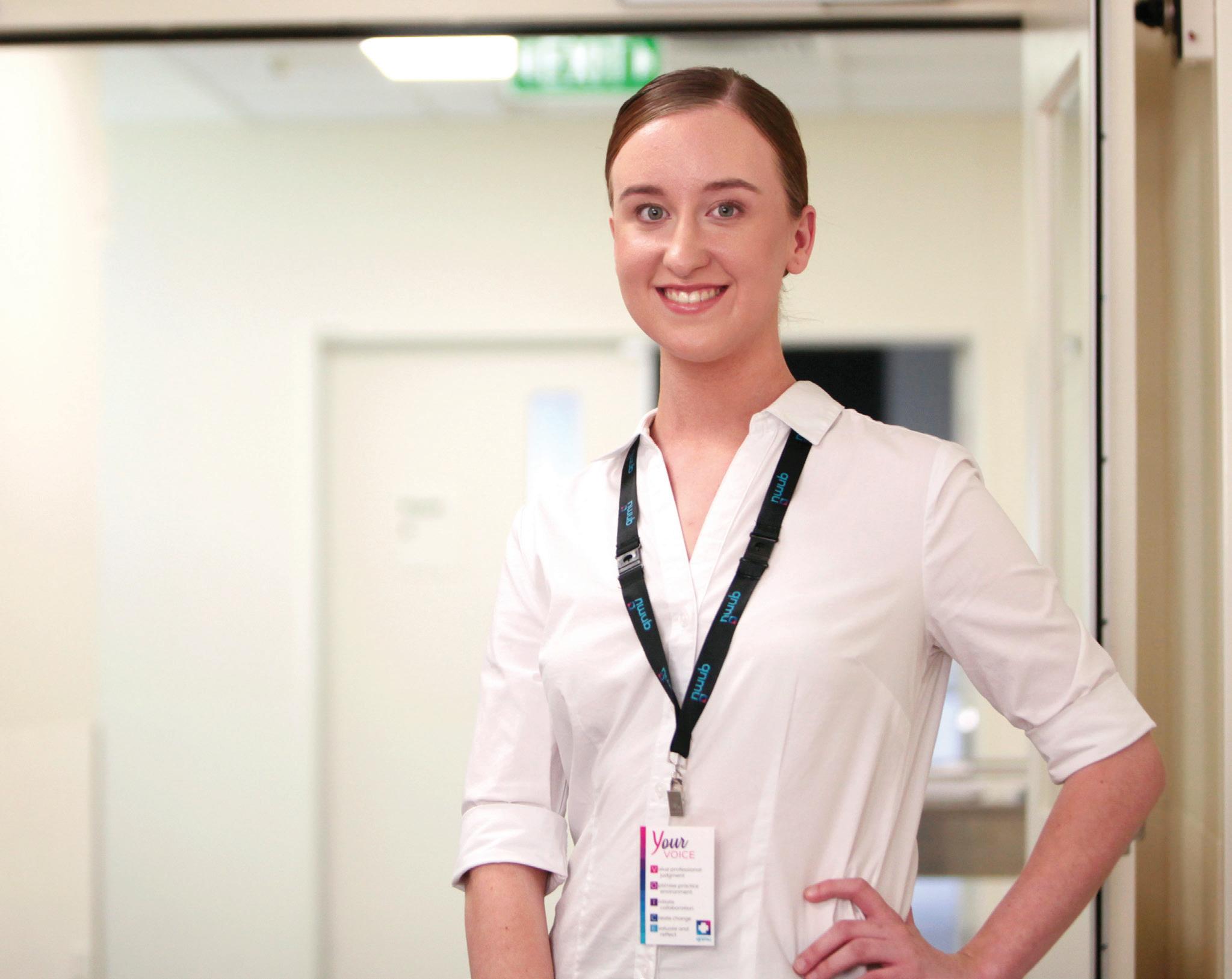
2 minute read
What can you do to further a positive practice environment in your workplace?
If you haven’t already done so, read through the Positive Practice Environment Standards you can see where your workplace achieves these standards and where further work needs to be done.
Visit www.qnmu.org.au/ PPEStandards to read the standards.
Advertisement
Talk to your colleagues and line manager about the standards, and to help become an advocate for positive practice workplaces, attend a QNMU Positive Practice Environment education session to find out more and how you can influence change in your own workplace.
Visit www.qnmu.org.au/Events to enrol in a education session.
An important way for the QNMU to find out what members think, and what affects them in both their work and personal life is the triennial Grow Your Voice member research survey which has recently been sent to all members.
This research survey collects information from members about a number of workplace issues that affect members such as physical, psychological and cultural safety, and workloads.
The findings of this research will inform the QNMUs strategic direction for promoting positive practice environments for the benefit of all members.
Achieving positive practice workplaces for nurses and midwives is a key role of the QNMU on behalf of members.
Unfortunately, there are no simple solutions as many factors contribute to what can be described as a positive practice environment. The implementation of ratios in much of the public hospital sector and state nursing homes is a good first step and has been followed up with recognition of the importance of positive practice workplaces in the latest Queensland Health Enterprise Agreement.
There is, however, much more to be done in the private health and aged care sectors, particularly now that the public sector has been established as a benchmark.
All nurses, midwives and carers should have the advantage of workplaces where they can do meaningful work, feel safe, can manage their workloads, feel supported and can finish a shift feeling a sense of accomplishment and satisfaction.
References:
ANMF. (2020). Australian Nursing and Midwifery Federation
National COVID-19 Survey 2022 – Public and Private Hospitals. Australian Nursing and Midwifery Federation. www. anmf.org.au/documents/reports/ ANMFCOVID-19Survey2022_ AustralianHospitals_FinalReport. pdf DOI:10.37464/ANMF.2532022.1
Berlin, G., Essick, C., Lapointe, M., & Lyons, F. (2022). Around the world, nurses say meaningful work keeps them going. McKinsey & Company. https://www.mckinsey. com/~/media/mckinsey/industries/ healthcare%20systems%20 and%20services/our%20insights/ around%20the%20world%20 nurses%20say%20meaningful%20 work%20keeps%20them%20going/ around-the-world-nurses-saymeaningful-work-keeps-themgoing-v3.pdf?shouldIndex=false
International Council of Nurses. (2021). The ICN Code of Ethics for Nurses. https://www.icn.ch/system/ files/2021-10/ICN_Code-of-Ethics_ EN_Web_0.pdf
Mannix, K. (2021). The future of Australia’s nursing workforce: COVID-19 and burnout among nurses. The University of Melbourne, Australia. https://www. unimelb.edu.au/__data/assets/ pdf_file/0004/4085194/katelyn_ mannix_report.pdf
McHugh, M. D., Aiken, L. H., Sloane, D. M., Windsor, C., Douglas, C., & Yates, P. (2021). Effects of nurseto-patient ratio legislation on nurse staffing and patient mortality, readmissions, and length of stay: a prospective study in a panel of The Lancet, 397(10288), 1905-1913. https://doi.org/10.1016/ S0140-6736(21)00768-6
McHugh, M. D., Aiken, L. H., Windsor, C., Douglas, C., & Yates, P. (2020). Case for hospital nurse-to-patient ratio legislation in Queensland, Australia, hospitals: an observational BMJ open 10(9), e036264. http://dx.doi.org/10.1136/ bmjopen-2019-036264
Olds, D. M., Aiken, L. H., Cimiotti, J. P., & Lake, E. T. (2017). Association of nurse work environment and safety climate on patient mortality: A cross-sectional study. International journal of nursing studies 74 155-161. https://doi.org/10.1016/j. ijnurstu.2017.06.004
Queensland Nurses and Midwives’ Union. (2020). Positive Practice Environment Standards for Nursing and Midwifery. Brisbane. https://www.qnmu.org.au/Web/ Campaigns/PPE-Standards.aspx
White, E. M., Aiken, L. H., Sloane, D. M., & McHugh, M. D. (2020). Nursing home work environment, care quality, registered nurse burnout and job dissatisfaction. Geriatric 41(2), 158-164. https://doi.org/10.1016/j. gerinurse.2019.08.007







